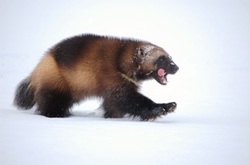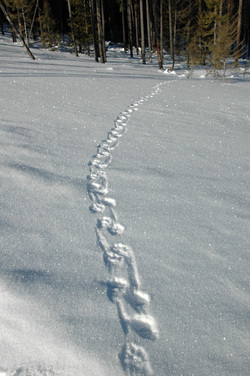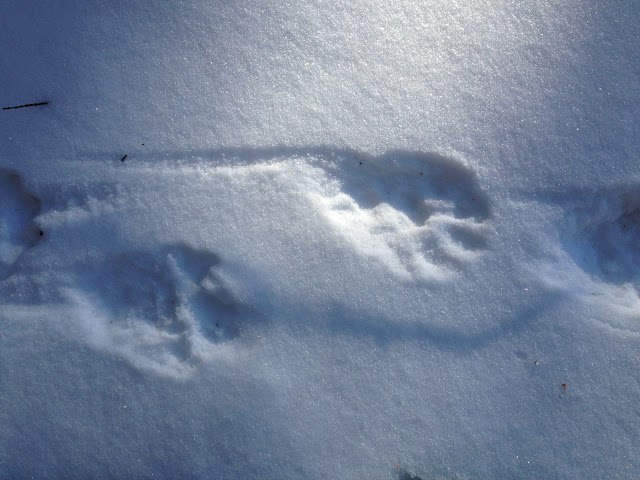The trip was organized by our friends at Adventurers and Scientists for Conservation, who we partnered with on several similar grizzly tracking workshops that I wrote aboutlast fall. This time, ASC was partnering with Wild Things Unlimited, a nonprofit based in Bozeman, Montana, that focuses on tracking and other non-invasive survey methods to study rare carnivores like lynx, wolverines, and fishers. These animals are so rare and elusive that relatively little is known about their dwindling populations and geographic distributions – and gaining a better understanding is crucial for figuring out how to protect these animals and their habitat, particularly as climate change and development take an increasing toll.
Now, I should say that I think lynx are awesome. A larger cousin of the bobcat, they have huge, snowshoe-like paws that any snow-loving human would envy, and they are amazingly graceful and beautiful. But wolverines are just so darn gnarly that they amaze me even a little bit more. By way of comparison, I can assure you that real-life wolverines are even fiercer than the “X-Men” character Wolverine. When was the last time you saw Hugh Jackman crunch through a moose femur on his way to eating the entire carcass, leaving only a few bits of hair and hide? Or claw his way out of a trap with 8-inch-thick hardwood walls? (Ok, that one might be possible with Hugh’s claws.) But voluntarily roam through avalanche debris sniffing out carrion buried deep under the snow? Fight off a grizzly bear 10 times his size? You get my point.
So everyone in the group was beyond thrilled when, in the first 10 minutes of our first morning in the field, we came across a set of amazingly crisp, fresh wolverine tracks leading into the woods. One of the rarest animals in Montana, and their tracks were right here in front of us. We couldn’t believe our luck.
We followed the tracks all day, looking for scats along the trail and investigating places where the wolverine had stopped to dig or rest for a while, leaving behind a few stray hairs in the snow. When we found hair, scat, or urine samples, we collected them (with a plastic baggie, just like at the dog park) and marked the spot on our GPS. (I’ll spare you the details of how we dried out the scats on a plate in our cabin that night.) These samples will be sent to a lab for DNA analysis, to gain information about the wolverine population in this area.
As our leaders explained, this area is not considered typical wolverine habitat but has surprisingly high densities of wolverines and lynx. It is in a relatively narrow corridor between the Northern Continental Divide Ecosystem (around Glacier National Park) and the Greater Yellowstone Ecosystem (around – you guessed it – Yellowstone National Park). Understanding how wildlife use this type of corridor, and protecting these areas from habitat fragmentation, will be crucial as climate change alters key habitats. DNA and other data from this type of study can contribute immensely to that understanding, helping land and wildlife managers make scientifically sound decisions.
Our group followed wolverine tracks and lynx tracks all weekend, and we came across wolf, ermine, snowshoe hare, grouse, and other tracks too. Seeing a forest so alive with signs of wildlife in the middle of winter was truly awesome. And maybe if I’d followed a few more lynx tracks I’d be writing a blog about those cool cats. But something about following the incredibly fresh footprints of a wolverine got me particularly excited about these gnarliest of American carnivores.
I mean, we were following the trail of an animal that can climb 4,900 feet in 90 minutes (yes, you read that right – a vertical mile in just an hour and a half). Tracking wolverine prints through the snow, you realize you could follow this wandering path essentially forever – or at least until the point where the last snowfall covered older tracks. That experience is hard to describe and impossible to forget.
So, as a conservationist, I was excited to help out with a scientific study of rare carnivores and crucial habitat corridors. As a lover of adventure, I was equally psyched to experience what it’s like to follow wolverines through a snowy forest all weekend. It’s that feeling – the thrill of tracking a wild carnivore through wild landscapes – that will keep me heading out into the woods for years to come.



